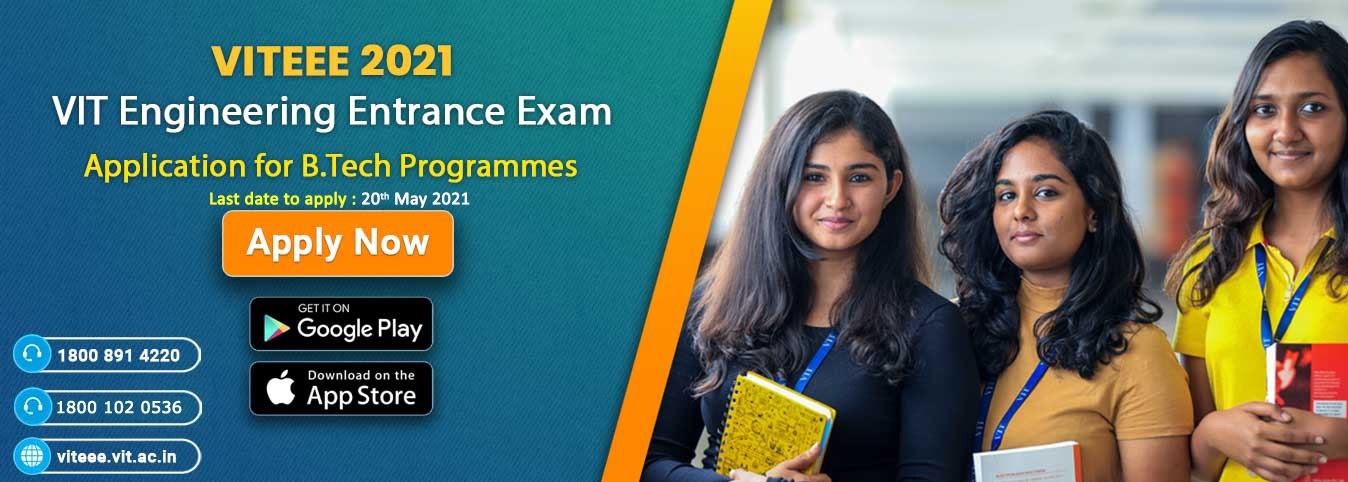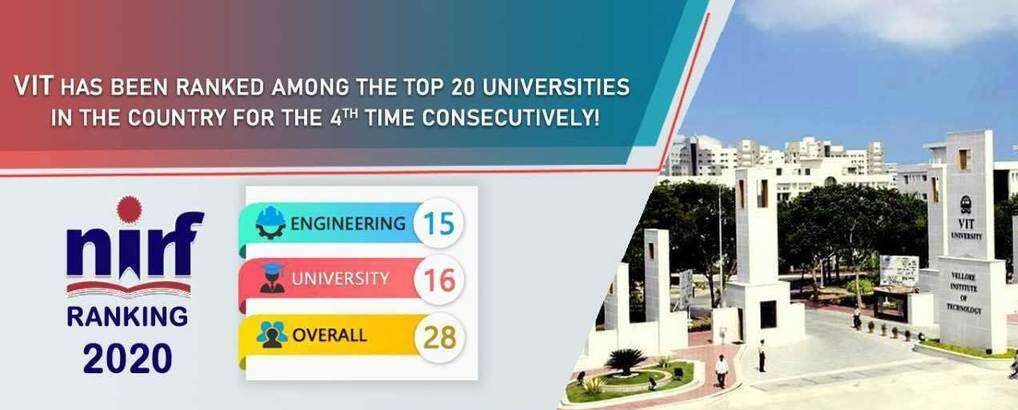VIT VITEEE 2021 Syllabus : Vellore Institute of Technology
Organisation : Vellore Institute of Technology
Exam Name : VIT Engineering Entrance Examination (VITEEE) 2021
Announcement :VITEEE 2021 Syllabus
Exam Date : May 28, 29 and 31, 2021
Website : https://viteee.vit.ac.in/
| Want to comment on this post? Go to bottom of this page. |
|---|
VIT VITEEE Exam
VITEEE 2021 will be conducted by the Vellore Institute of Technology on May 28, 29 and 31.
Related / Similar Syllabus : VSAT 2021 Vedantu Scholarship Test Syllabus

VITEEE Syllabus
Physics:
1.Laws of Motion & Work, Energy and PowerLaw of conservation of linear momentum and its applications. Static and kinetic friction – laws of friction – rolling friction – lubrication. Work done by a constant force and a variable force; kinetic energy – work-energy theorem – power. Conservative forces: conservation of mechanical energy (kinetic and potential energies) – non-conservative forces: motion in a vertical circle – elastic and inelastic collisions in one and two dimensions.
2.Properties of MatterElastic behaviour – Stress-strain relationship – Hooke’s law – Young’s modulus – bulk modulus – shear modulus of rigidity – Poisson’s ratio – elastic energy. Viscosity – Stokes’ law – terminal velocity – streamline and turbulent flow – critical velocity. Bernoulli’s theorem and its applications. Heat – temperature – thermal expansion: thermal expansion of solids – specific heat capacity: Cp, Cv – latent heat capacity. Qualitative ideas of Blackbody radiation: Wein’s displacement Law – Stefan’s law.
Chemistry:
1.Atomic StructureBohr’s atomic model-Sommerfeld’s extension of atomic structure; Electronic configuration and Quantum numbers; Shapes of s,p,d,f orbitals – Pauli’s exclusion principle – Hund’s Rule of maximum multiplicity- Aufbau principle. Emission and absorption spectra, line and band spectra; Hydrogen spectrum – Lyman, Balmer, Paschen, Brackett and Pfund series; deBroglie’s theory; Heisenberg’s uncertainty principle – wave nature of electron – Schrodinger wave equation (No derivation). Eigen values and eigen functions. Hybridization of atomic orbitals involving s,p and d orbitals.
2.p,d and f – Block Elementsp-block elements – Phosphorous compounds; PCl3, PCl5– Oxides. Hydrogen halides, Interhalogen compounds. Xenon fluoride compounds. General Characteristics of d – blockelements – Electronic Configuration – Oxidation states of first row transition elements andtheir colours. Occurrence and principles of extraction: Copper, Silver, Gold and Zinc.Preparation andproperties of CuSO4, AgNO3 and K2Cr2O7.Lanthanides – Introduction, electronic configuration, general characteristics, oxidation state –lanthanide contraction, uses, brief comparison of Lanthanides and Actinides.
Mathematics:
1.Matrices and their ApplicationsAdjoint, inverse – properties, computation of inverses, solution of system of linear equations by matrix inversion method. Rank of a matrix– elementary transformation on a matrix, consistency of a system of linear equations, Cramer’s rule, non-homogeneous equations, homogeneous linear system and rank method. Solution of linear programming problems (LPP) in two variables.
2.Trigonometry and Complex NumbersDefinition, range, domain, principal value branch, graphs of inverse trigonometric functions and their elementary properties. Complex number system – conjugate, properties, ordered pair representation. Modulus– properties, geometrical representation, polar form, principal value, conjugate, sum, difference, product, quotient, vector interpretation, solutions of polynomial equations, De Moivre’s theorem and its applications.Roots of a complex number – nth roots, cube roots, fourth roots.
Biology:
1.TaxonomyNeed for classification; three domains of life. Linnaean, Whittaker, Bentham and Hooker systems of classification. Salient features and classification of non-chordates up to phyla levels and chordates up to class levels. Morphology and anatomy of flowering plants. Structural organization in insects(cockroach)
2.Cell and Molecular BiologyCell theory. Prokaryotic cell and it’s ultrastructure. Eukaryotic cell- cell wall, cell membrane, cytoskeleton, nucleus, chloroplast, mitochondria, endoplasmic reticulum, Golgi bodies, ribosomes, lysosomes, vacuoles and centrosomes. Cell cycle and division – amitosis, mitosis and meiosis. Search for genetic material; structure of DNA and RNA; replication, transcription, genetic code, translation, splicing, gene expression and regulation (lac operon) and DNA repair
English Aptitude :
Questions on English and it will be Multiple Choice Questions testing the comprehension of a short passage or line of poems, English grammar and pronunciation. Please note that the passages, lines of poems, dialogues, grammar and pronunciation items are chosen to suit the level of higher secondary or equivalent education.
Assessment will be the following topics:
1. Data Interpretation
2. Data Sufficiency
3. Syllogism
4. Number series, Coding and Decoding
5. Clocks, Calendars and Directions

Important Dates
** Launch of web application : 30th November, 2020
** Last date to apply : 20th May, 2021
** Dates of examination (VITEEE-21) : 28th, 29th & 31st, May 2021 (The VITEEE will be conducted as online remote proctored examination)
** Counselling date (Tentative) : To be announced
** Class commencement (Tentative): To be announced